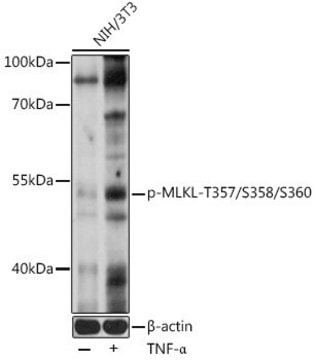924229
(S,R,S)-AHPC-Me
95%
Sinónimos:
(2S,4R)-1-((S)-2-amino-3,3-dimethylbutanoyl)-4-hydroxy-N-((S)-1-(4-(4-methylthiazol-5-yl)phenyl)ethyl)pyrrolidine-2-carboxamide, PROTAC® research ligand, VH032 methyl derivative
About This Item
Productos recomendados
ligand
VH032
Nivel de calidad
Análisis
95%
formulario
powder
temp. de almacenamiento
2-8°C
cadena SMILES
C([C@H](C(C)(C)C)N)(=O)N1[C@H](C(N[C@@H](C)C2=CC=C(C=C2)C3=C(C)N=CS3)=O)C[C@@H](O)C1
Aplicación
Related Technology Spotlight: Degrader Building Blocks for Targeted Protein Degradation
Browse our growing synthesis and research tools: Protein Degrader Building Blocks
Otras notas
Discovery of ARD-69 as a highly potent proteolysis targeting chimera (PROTAC) degrader of androgen receptor (AR) for the treatment of prostate cancer
Design, Synthesis, and Biological Evaluation of MEK PROTACs
Antibody–PROTAC Conjugates Enable HER2-Dependent Targeted Protein Degradation of BRD4
Discovery of a First-in-Class Mitogen-Activated Protein Kinase Kinase 1/2 Degrader
Discovery of PROTAC BCL-XL degraders as potent anticancer agents with low on-target platelet toxicity
Discovery of MD-224 as a First-in-Class, Highly Potent, and Efficacious Proteolysis Targeting Chimera Murine Double Minute 2 Degrader Capable of Achieving Complete and Durable Tumor Regression
A caged E3 ligase ligand for PROTAC-mediated protein degradation with light
Discovery of SHP2-D26 as a First, Potent, and Effective PROTAC Degrader of SHP2 Protein
Selective CDK6 degradation mediated by cereblon, VHL, and novel IAP-recruiting PROTACs
Información legal
Producto relacionado
Código de clase de almacenamiento
11 - Combustible Solids
Clase de riesgo para el agua (WGK)
WGK 3
Punto de inflamabilidad (°F)
Not applicable
Punto de inflamabilidad (°C)
Not applicable
Certificados de análisis (COA)
Busque Certificados de análisis (COA) introduciendo el número de lote del producto. Los números de lote se encuentran en la etiqueta del producto después de las palabras «Lot» o «Batch»
¿Ya tiene este producto?
Encuentre la documentación para los productos que ha comprado recientemente en la Biblioteca de documentos.
Nuestro equipo de científicos tiene experiencia en todas las áreas de investigación: Ciencias de la vida, Ciencia de los materiales, Síntesis química, Cromatografía, Analítica y muchas otras.
Póngase en contacto con el Servicio técnico








